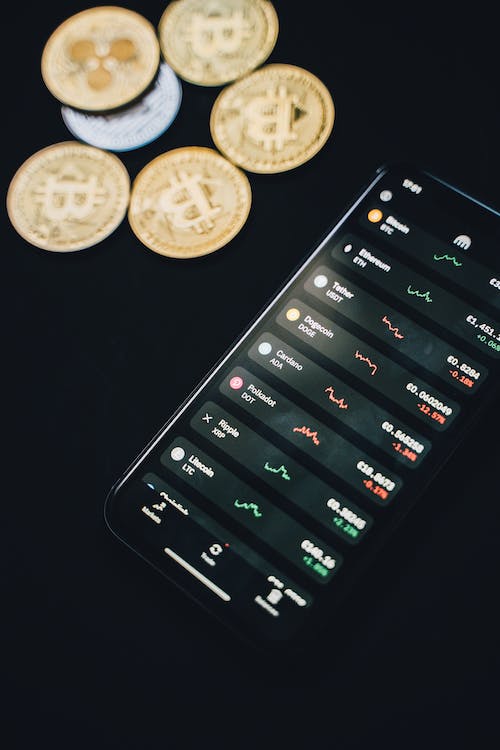Bitcoin and other cryptocurrencies have been all over the news lately. This is quite understandable, considering the price of cryptocurrencies has been steadily increasing since March 2020. The cryptocurrency market cap has increased by 1200% since the COVID19 crisis began, which is an incredible feat.
This increased interest has pushed both retail and institutional investors to purchase bitcoin en masse and try to get a piece of the cake. However, there are still some skeptics out there that think that cryptocurrencies are just a product of speculation.
Some governments even believe that cryptocurrencies are mainly used for criminal activities and money laundering. The goal of this article is to show you the real impact of digital currencies on the monetary system of today.
To this end, we will introduce you to bitcoin, the original crypto. We will explain how this seemingly simple concept has disrupted the financial world and contributed towards a financial revolution away from governments and banks.
What is Bitcoin?
Bitcoin is the first cryptocurrency that was released in 2009. It was created as a peer-to-peer digital payment network, where users can seamlessly exchange value over the internet.
The goal was to provide a decentralized and global network, where the native currency of the network would be created by a mathematical process (called mining). This is in contrast to traditional currencies that are dependant on governments and central banks for their issuance.
It would be independent of any central authority, giving back financial control to the people.
Furthermore, its creator, Satoshi Nakamoto, wanted to create a deflationary currency. To achieve this, he limited the number of bitcoin ever to be issued to a fixed number – 21 million.
The benefits of Bitcoin vs traditional money
The concept of decentralization has created numerous benefits for cryptocurrency users. Below is just a small number of these, whether you consider them as currency or a store of value.
- Eliminates fraud – cryptocurrency transactions are recorded permanently on an electronic public ledger called the blockchain. Thousands (sometimes millions) of computers have an exact copy of this ledger, which makes it inherently resistant to malicious alterations. Moreover, transactions on the blockchain are final, which makes chargeback fraud non-existent.
- Can’t be falsified – unlike FIAT money, digital currencies aren’t represented by a physical medium. Instead, they are just representations of code on the blockchain, making them impossible to duplicate.
- Deflationary – cryptocurrencies, for the most part, have a capped maximum supply. Governments can print traditional money as they see fit, ultimately diluting the value of money in circulation. The limited amount of cryptos plays in their favor as it provides scarcity, and therefore, increased value over time.
- Permissionless – since transactions don’t rely on third parties, anyone can use the network without restrictions. This means that people in countries with poor banking infrastructure can access new financial opportunities and participate in the global economy.
With that said, due to the price of Bitcoin, the digital asset has become more of a solid store of value than a network used for daily transactions. While this is true, many alternative cryptocurrencies were created, that provide cheap transactions and many other functionalities.
What is DeFi?
Blockchain technology saw a major upgrade when the Ethereum network was released in July 2015. This new cryptocurrency introduced the general public to smart contracts. These self-executing contracts are used to automate numerous functions on the blockchain
Smart contracts can be used to create alternative cryptocurrencies, but also to deploy decentralized applications (dApps) on the network.
These dApps have allowed developers to create different decentralized financial products on the ethereum blockchain. This has given birth to decentralized finance, or DeFi, which attempts to provide traditional finances such as lending and trading in a completely decentralized manner.
Today, the DeFi ecosystem is continuously growing. From the beginning of January, the amount of funds locked in DeFi has more than quadrupled and is valued at over $45 billion at the moment of writing.
What will the future of digital money be?
While Bitcoin was created to replace the traditional financial system, it’s a pretty far-fetched scenario. This might happen in case the entire global population suddenly loses its trust in the current banking system, which is highly unlikely.
However, a more plausible scenario is that the cryptocurrency market, paired with decentralized finance, will coexist with the traditional monetary system.
Bitcoin is becoming a premium store of value and is quickly gaining ground on other commodities. Its market cap already represents 10% of that on of Gold, only a decade after its release.
Furthermore, the DeFi ecosystem should continue its growth and increase in popularity in the following years. These financial products should drive mass adoption of cryptocurrencies, reducing their volatility over time and increasing their viability as a long-term investment.
Closing comments
Cryptocurrencies have disrupted the financial world by allowing a decentralized monetary system, accessible by anyone and independent from any central authority. Their success is undeniable, and they have shown to improve the existing financial ecosystem in almost every way.

